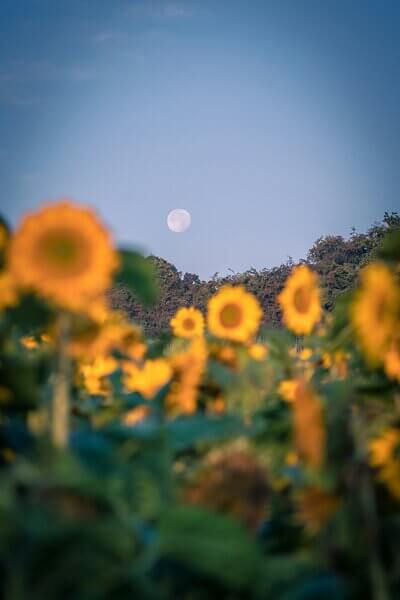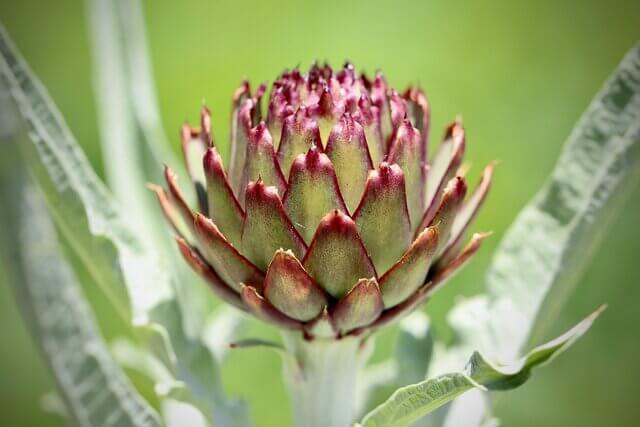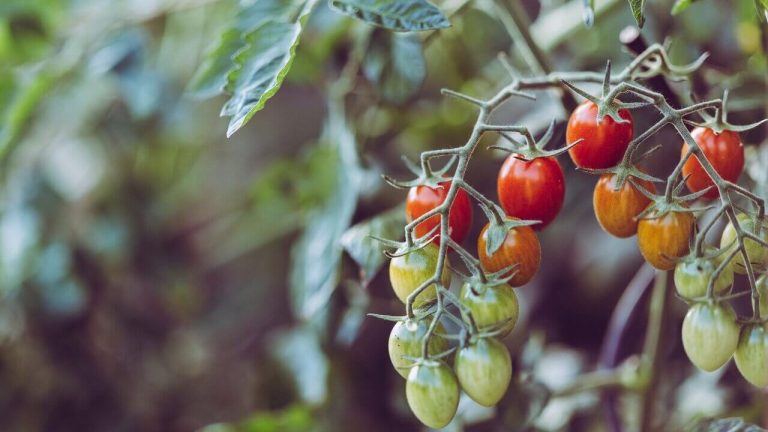Moon Gardening Made Simple
Have you ever noticed how the moon seems to influence more than just the ocean tides? It affects our sleep, our mood, and many gardeners believe moon gardening affects our plants too.
The moon has this unique power in its steady rhythm, and for ages, farmers everywhere have turned to it for help with planting, pruning, and harvesting.
Lunar gardening, or moon gardening, isn’t new. It’s a time-tested practice that connects our gardens to the natural cycles of light and gravity. It might sound a bit magical at first, but it’s really about syncing up with nature, just paying attention to the patterns that people have noticed for ages. You don’t need any fancy gear or to be a space expert. If you can glance up at the moon or check out the weather on your phone, you’re already more than halfway there.
If you’re into growing veggies, flowers, herbs, or trees, knowing how the moon impacts your garden can totally change up your planting strategy. And no, it doesn’t mean gardening at night or making drastic changes to your schedule.
In this article, I’ll walk you through the basics of how the moon influences plant growth, what to plant during each moon phase, and how to give this method a try in a way that fits into your current routine.
How Does the Moon Affect Gardening?
Let’s start with why the moon even matters in the garden in the first place.
Looking at the ocean tides is the easiest way to see what effect the moon has on nature. Its gravitational pull causes the oceans to rise and fall. But what many people don’t realize is that same gravitational force also affects the water in our soil, and even the water and sap movement inside our plants.
This’s why gardeners who follow the moon often see better germination rates, stronger roots, and healthier growth overall. They’re getting in sync with a natural rhythm that’s already happening underground.
During the new moon and full moon, the gravitational pull is strongest. Moisture rises in the soil during these times, making it easier for seeds to absorb water and sprout. These phases are often considered the most fertile points in the lunar cycle and are ideal for planting.
And while there’s still some discussion among scientists about how much moonlight or gravity really impacts how plants grow, thousands of gardeners and farmers from way back swear there’s definitely something to it.
This isn’t just a way to grow food. Whether you’re taking care of cosmos or carrots, basil or blueberries, the same basic ideas work for all of them. Every plant does better when it’s planted, trimmed, or picked at just the right time, and the moon can help you figure out the perfect timing.
Next, let’s look at the moon phases and I’ll show you how simple it is to plan your gardening tasks around them without fancy tools or complicated tracking needed.
Understanding the Moon Phases (and How to Use Them in the Garden)
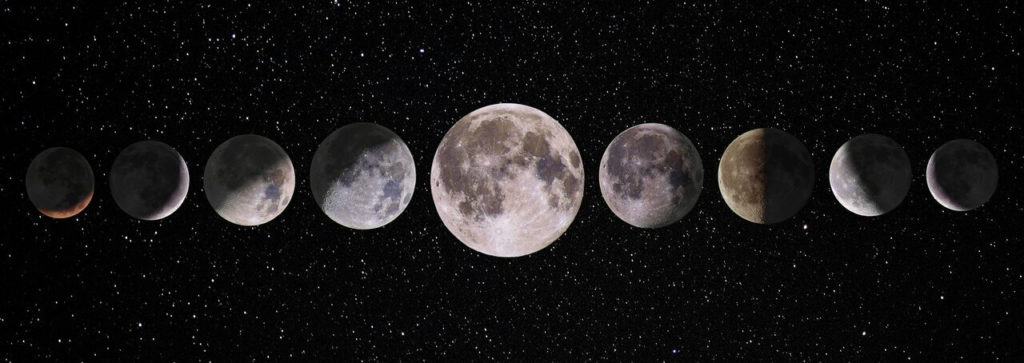
If you’re new to moon gardening, the first thing to understand is how the moon’s phases work. The lunar cycle lasts about 29.5 days, and it moves through four primary phases: New Moon, First Quarter, Full Moon, and Last Quarter. These phases are interesting to look at and they can actually help you figure out the best times to plant, prune, transplant, or harvest. It all depends on how water and energy flow through plants and soil at each stage.
Let’s break it down. The New Moon is when the moon is completely dark. From there, it begins to grow brighter each night. This increasing light is called the waxing phase. When we reach the First Quarter, the moon looks half-full, with the right side illuminated. As it continues to brighten, we reach the Full Moon, when the entire face is lit up. After that, the light begins to fade in the waning phase. The Last Quarter shows another half-moon, this time with the left side lit, and the moon continues to shrink until it disappears again at the New Moon.
I used to get confused about “waxing” and “waning” and how to know which was which. Then I found this simple way to remember: “Wax on, wane off.” Waxing means the moon is adding light and growing brighter, while waning means it’s losing light and shrinking back down.
If you’re in the above the equator in the Northern Hemisphere, here’s a visual trick: when the moon looks like a “D”, it’s waxing (getting bigger); when it looks like a “C”, it’s waning (getting smaller). Just remember D-O-C: D is waxing, O is full, C is waning. Once I got this image recorded in my head, I’ve always been able to remember and easily tell which moon is out.
How does Moon Gardening Work?
The idea behind moon gardening is that the gravitational pull and amount of moonlight influence what’s happening below and above ground.
In the waxing phase (from New Moon to Full Moon), energy is said to be moving upward, supporting leafy growth and fruit development. During the waning phase (from Full Moon to New Moon), the energy is pulling downward, favoring root growth and underground activity. Moon gardening is about working with nature’s rhythms. You align your gardening tasks with the moon’s energy to help your plants grow better.
This method applies whether you’re growing lettuce or lavender, beets or begonias. And while Hardiness Zones and your local planting zone will still determine which crops or flowers grow best during the season, the moon can help you fine-tune the timing of those tasks.
For example, a gardener in the southern part of a state might plant earlier than someone up north, but both can use the same moon phases to decide whether it’s the best week to sow seeds, transplant starts, or prune back perennials.
One of the best things about moon gardening is that you don’t need to track the phases yourself. There are free websites and apps that show the moon phase each day, and many gardening planners now include it too.
Tracking Moon Gardening
If you’d rather not track moon phases manually, there are plenty of easy tools available to help. One example is the Moon Calendar for Gardeners. It’s a perpetual dial-style calendar that shows you at a glance when to sow, plant, prune, or harvest. You simply set it to the date of the new moon each month, and it guides you through the lunar cycle. It’s a beautifully designed resource that many gardeners find useful year after year.
Next, let’s take a closer look at what to do during each moon phase, so you can start using this in your garden right away.
Moon Gardening: What to Plant and When by the Phase of the Moon
Now that you know how the moon moves through its phases, let’s talk about what you can actually do in the garden during each one.
Moon gardening is a simple idea that requires you to complete your gardening tasks with the direction of the moon’s energy (rising during the waxing phase, descending during the waning phase). You don’t have to get it perfect because it’s about the rhythm and not rigid rules.
What you will likely find is when you time your planting and maintenance with these phases, your plants will settle in more easily, grow stronger, and yield more.
Early Waxing Phase
Let’s start by looking at the New Moon to First Quarter, also known as the early waxing phase. The moon is gaining light, and this is when energy is said to be moving upward. In this phase, the processes of germination and leaf development are stimulated.
This is an ideal time to plant leafy greens like lettuce, spinach, arugula, and herbs like parsley and cilantro. It’s also a great time for flowering plants that grow above ground and don’t fruit, such as calendula, pansies, and cosmos. If you’re starting seeds indoors, this phase gives them a moisture boost and a strong push to sprout and grow upward.
Waxing Phase
As the moon continues to brighten into the First Quarter to Full Moon, we move deeper into the waxing phase. This is the time to plant anything that produces its crop above ground with seeds inside, like tomatoes, beans, squash, cucumbers, and peppers. It’s also a wonderful time for planting fruiting flowers, like nasturtiums or marigolds, and woody ornamentals that bloom, such as hibiscus or butterfly bush.
The growing light supports flowering and fruit development, and the gravitational pull still helps with water absorption. If you’re transplanting seedlings into your garden, this phase gives them a strong start.
Waning Phase Begins
After the Full Moon, the light begins to fade and the moon starts waning. From Full Moon to Last Quarter, energy moves downward into the soil. This is the best phase for planting root crops like carrots, beets, onions, radishes, and potatoes, since they benefit from strong root development and downward pull.
It’s also a great time to plant perennials, bulbs, or tubers like dahlias or lilies, because the energy helps establish strong root systems. You can also start cool-season plants that stay close to the ground, like cabbage and cauliflower.
Final Moon Phase
The final phase, from the Last Quarter to the New Moon, is the quietest time in the garden. It’s not recommended for planting, but it’s perfect for everything else. Use this phase to weed, prune, deadhead, compost, turn your soil, or harvest.
Plants are more dormant during this time, so cutting back won’t stress them as much. It’s also a good window for reflection, planning, and organizing your gardening journal.
One of the most exciting things about lunar gardening is that it creates a rhythm for your tasks. You’re not trying to tackle everything at once; instead, you’re spreading your tasks throughout the month, working with nature’s rhythm.
Whether you’re planting a few petunias in a pot or setting up a whole bed of bell peppers in the backyard, this approach makes it super easy to figure out what to do when, just by checking out the moon.
How to Start Moon Gardening in Your Own Backyard
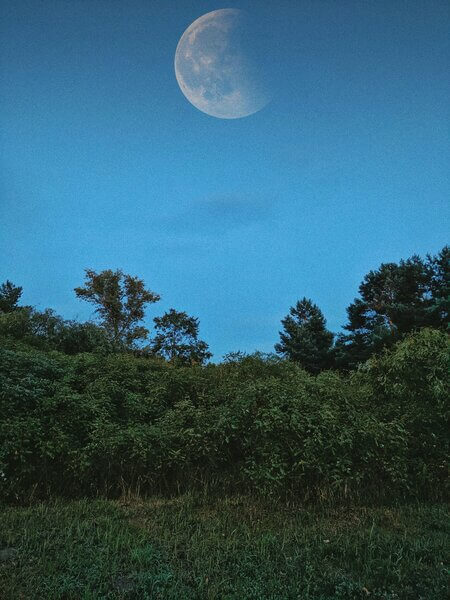
Have you heard of moon gardening? If not, you might be wondering, “This sounds interesting, but where do I begin?” The good news is that you don’t need to overhaul your entire gardening routine. You can start small, just enough to get a feel for it, and then expand if you enjoy the results.
A simple way to begin is to choose one garden task or crop to experiment with this month. Perhaps you’ll try planting lettuce during the waxing moon or set aside time to prune perennials during the waning phase.
The idea isn’t to renovate your entire garden all at once, but to start noticing how your efforts align with the moon and how your plants respond.
Moon Gardening Journal
If you keep a gardening journal (or even a basic notebook), consider adding a column to track the moon phase alongside your regular notes. Jot down what you planted, transplanted, or trimmed, and what the weather was like.
Over time, you’ll start to spot patterns. You might notice your peas germinate faster when planted just after a new moon, or your dahlias bloom more consistently when planted during a waxing phase. These small observations can help you refine your approach and make the most of the natural energy already at work in your garden.
If you’re someone who loves planning, you might try mapping out the entire lunar month in advance. You can find moon phase calendars online, in many gardening planners, or even through weather apps.
Or, if you want something simple and reusable, a tool like the Moon Calendar for Gardeners makes it easy to stay on track. It’s perpetual, meaning you only buy it once and use it every year. Just set the dial to the new moon each month, and it’ll show you the best times to plant, prune, and harvest without needing to calculate anything yourself.
Most importantly, don’t stress about doing it perfectly. There will always be times when the weather, your schedule, or the plants themselves don’t cooperate. That’s okay. Think of moon gardening as a guide, not a rulebook. Start where you are, use what you have, and stay curious. That’s what gardening is all about.
Common Questions and Misconceptions About Moon Gardening
Whenever something blends tradition with a touch of mystery, it’s natural to have questions, and moon gardening is no exception. If you’re still on the fence, I’d like to help clear up a few common concerns.
One of the first things people ask is, “Do I really have to follow this exactly?” The answer is absolutely not. Moon gardening isn’t meant to be rigid or stressful. Think of it as a rhythm to work with, not a deadline to beat. If you miss the “perfect” planting phase or the weather doesn’t cooperate, your plants will still grow. You’re simply giving them a little extra support by aligning your efforts with the moon’s natural cycle.
Another common question is, “What if I live in a totally different climate?” The good news is that the moon’s phases are the same everywhere. Whether you’re gardening in Texas or Tasmania, the pull of the moon and the change in light follow the same cycle. The key difference is your seasonal timing. Just plant what’s right for your climate, then use the moon to guide when in the month to take action.
People also ask, “Does this really work?” The honest answer is that there’s plenty of anecdotal evidence and a growing number of gardeners who swear by it. While science hasn’t fully explained every part of lunar gardening, it does support the idea that the moon affects water movement, and possibly even plant behavior. At the end of the day, it’s one of those things where the best way to find out is to try it yourself. Think of it as a natural experiment in your own backyard.
Does Moon Gardening Mean Nighttime Gardening?
Finally, I want to address the myth that moon gardening means working under moonlight. It doesn’t! You’re still gardening during the day and just using the moon as your guide for timing. You are not required to do any midnight weeding, unless you want to.
If you’re even a little curious, I encourage you to try it. See what happens when you plant with the moon this season. You might be surprised by how much more connected and successful you feel in the garden.
Tune Into the Rhythm of the Moon
Gardening by the moon invites you to slow down, pay attention, and work with nature instead of against it. You don’t have to be the perfect gardener; you just need to be present enough to focus on this ancient, powerful, and consistently beautiful practice.
Whether you grow vegetables, herbs, flowers, or a mix of everything, the moon gardening approach offers a chance to bring more rhythm and intention to your garden.
You don’t need to be an expert, and you certainly don’t need to change everything you’re already doing. Just start small. Try aligning your next round of planting or pruning with the moon phase, and jot down what you notice. The garden has a way of teaching us, and the moon can be one of its quietest, most consistent teachers.
I’m Kim Nelson, a writer, entrepreneur, and Master Gardener; please connect with me. Have gardening questions or want more information? Join the VeggieGardenHQ.com community to get your copy of “Grow These Three Vegetables Anywhere Year-Round” and direct access to much more gardening information I share in my weekly newsletter.


